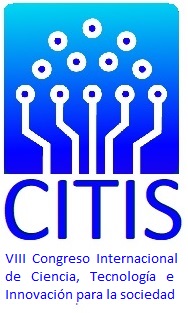
VIII International Conference on Science, Technology and Innovation for Society (CITIS 2022)
The VIII International Conference on Science, Technology and Innovation for Society, CITIS 2022, held from june 22 to 24, 2022 hibrid edition. organized by Universidad Politécnica Salesiana, offered the national and international academic community a unified communication platform, aimed at cover the theoretical and practical problems with the greatest impact on modern society through an engineering perspective.
In this eighth edition, dedicated to the 28 years of the life of La Salesiana, the thematic axes were related to the application of science, technological development and innovation in five fundamental pillars of our society: Industry, Mobility, Environmental Sustainability, Information and Telecommunications.
The scientific committee included 65 researchers from 15 countries (Spain, New Zeland, Belgium, Mexico, Australia, United States, Colombia, Brazil, United Kindom, Italy, India, Venezuela, Peru, Chile and Ecuador), who had the responsibility for evaluating, in a ‘double-blind review’ process, the 54 papers received in the conference.
The accepted contributions recreate recent research trends in the fields of software engineering, big data analysis, cloud computing, data engineering, data management and data mining, machine learning, deep learning, artificial intelligence, smart systems, robotics and automation, mechatronic design, and industrial processes design. CITIS 2022 also held five Workshops spaces, and several keynote speeches were given on cutting-edge topics related to the thematic axes of the conference. In addition, parallel working sessions were held to strengthen entrepreneurship and innovation skills for engineering students. The 54 papers accepted for presentation and discussion at the Conference were published by Springer Nature in the book series Lecture Notes in Networks and Systems. We acknowledge all of those that contributed to the staging of CITIS 2022 (authors, committees, workshop instructors, and our attendees). We deeply appreciate their involvement and support that was crucial for the success of the event.

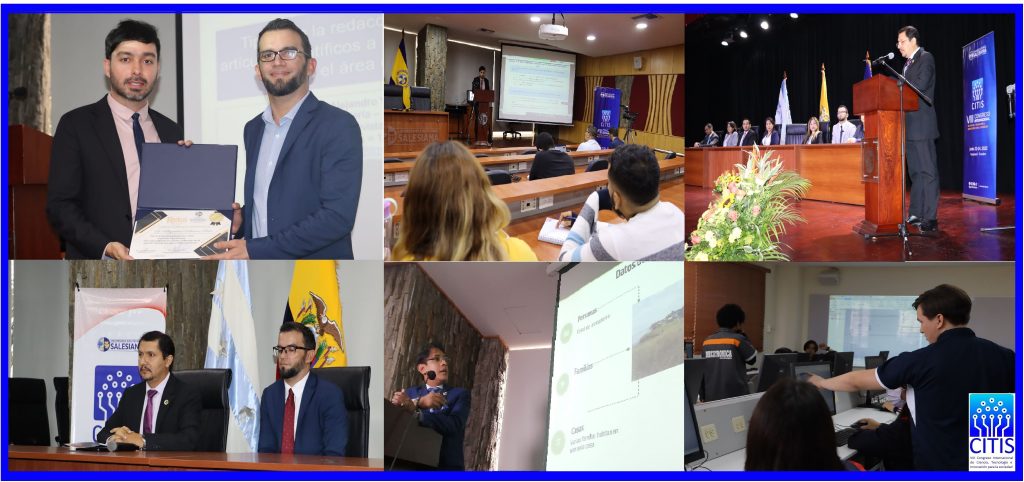
WORKSHOPS
WORKSHOP 1: Introduction to Big Data and socialnetwork analysis case study (Twitter)
Contenido: The workshop will start with a brief introduction to Big Data (definitions; valuechain; areas of Big Data; Big Data professional profiles; data source; differences concerningtraditional data technologies, types of data, and data flow; data quality; the V’s of Big Data).In a second block, we will analyze a case study using a documentary database (a MongoDBcluster), where a few thousand tweets (Python+Colab+Twitter Developer) will be stored tofinish showing a dashboard resulting from the analysis of these data (MongoDB Charts). Inthis second block, some additional theoretical concepts will be given for students to followthe explanations seamlessly. Also, to deploy the cluster and request the Twitter Developeraccount to see the case study, further details will be shown so that students can adapt it totheir preferences. Required skills/abilities: The instructor will give the basic concepts to understand theworkshop, but those students with basic knowledge of Python programming and databaseswill get more benefits. Tools: All tools are cloud-available and free access to run the case study during theworkshop and for attendees to continue working with them after the workshop is over. Python + Colab https://colab.research.google.com/ MongoDB Atlas https://www.mongodb.com/ Twitter Developer https://developer.twitter.com/ Audience: Academic community in general. Duration: 3 hours Date/Time: june 22th, 2022 (9:30-12:30 GMT-5). Modality: Hibrid. Venue:Room for multiple purposes (1st floor, Building D).
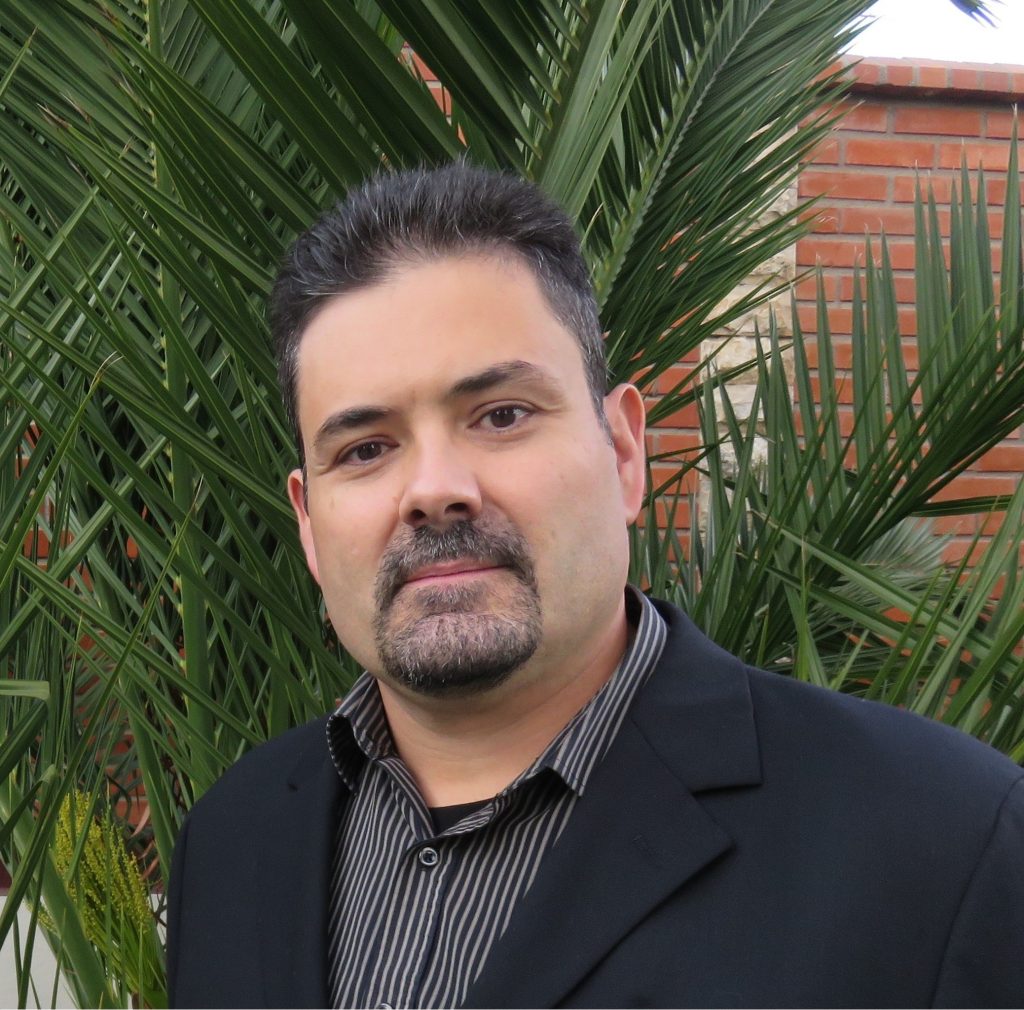
Instructor: Roger Clotet, Ph.D. Universidad Internacional de Valencia, Spain.
Ph.D. in Engineering from the Universidad Simón Bolívar, Venezuela and Computer Engineering from the Universidad Politécnica de Cataluña, Spain. He began his professional career in the private sector, working on multiple IT projects in Spanish companies, multinationals, and international organizations such as the UN. Subsequently, he has been dedicated to teaching and research in several universities: Polytechnic University of Catalonia (Spain), Johannes Kepler University (Austria), Simon Bolivar University (Venezuela), Andres Bello Catholic University (Venezuela) and University of the Armed Forces of Ecuador (ESPE). He is currently a Professor and Researcher at the Valencian International University (VIU) where he teaches in the Master in Big Data and Data Science and in the Degree in Computer Engineering. At a managerial level he is the Director of the mentioned degree and Principal Investigator of the Data Science Research Group (GRID) both at VIU. He is a senior member of the Institute of Electrical and Electronics Engineering (IEEE). His current research interests include: e-Agriculture, e-Health, Big Data, Wireless Sensor Networks and Humanitarian Technology. He has participated in numerous international research projects and published more than 50 papers in international journals and conferences.
WORKSHOP 2: Business resilience in times of pandemic
Content: Every day, companies have to face many threats due to their changing nature and the highly dynamic environment in which they operate. One example of this unstable and uncertain environment is that caused by the COVID19 pandemic, which has had and is having devastating effects on the health of the population and the economic health of companies. To cope with this situation, experts point to the resilience of companies, understood as the ability to anticipate and prepare for threats, adapt to the new context, and recover once the threat has already occurred and has had a negative impact. The workshop will review the constituent capabilities of business resilience and detail the business resilience response to COVID-19. It will also describe the different existing procedures to improve the resilience capacity and business continuity of companies. The European project CONTINUITY (No. 2021-1-IT01-KA220-VET-000033287) that will provide a Business Continuity Managers Training Platform will be also described during the Workshop. Required skills/abilities: Basic knowledge of quantitative methods. Tools: SATIER (Self-Assessment Tool to Improve Enterprise Resilience). Audience: Academic community in general. Duration: 2.5 hours Date/Time: June 22, 2022 (9:30-12:00 GMT-5). Modality: Hybrid. Venue: Auditorium.
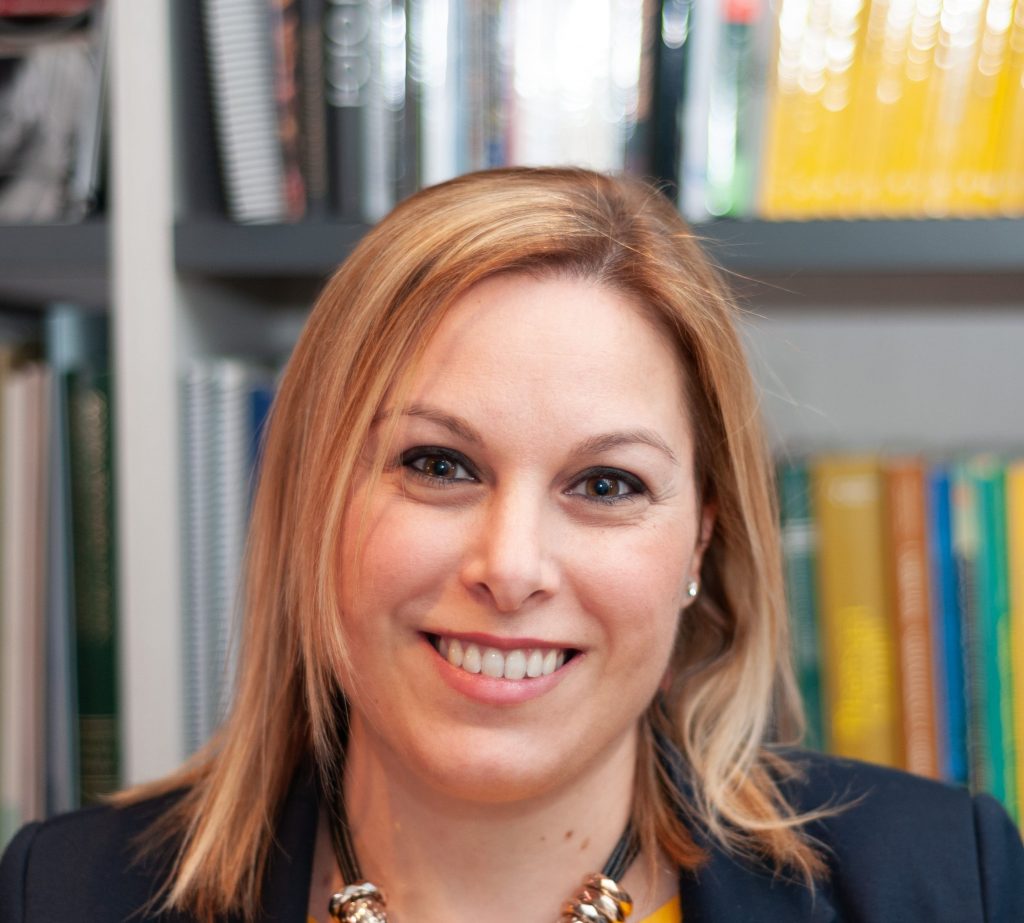
Instructor: Dra. Raquel Sanchis Gisbert, – Center for Research in Production Management and Engineering (CIGIP), Universitat Politècnica de València, Spain.
Raquel Sanchis holds a Ph.D. in Industrial Engineering and Production from the Universitat Politècnica de València (Spain) and a Diploma of Advanced Studies in the Ph.D. Program: Advanced Models for Operations Management and Supply Chain Management. She has been a Professor in the Department of Business Organization since 2012. She has participated in numerous teaching publications and educational innovation and improvement projects (PIME), being the Coordinator of the Institutional PIME: “Incorporation of project-based learning in the undergraduate degrees of the Polytechnic School.” She has had an outstanding research career since 2006, participating in 18 research projects in the field of Organizational Engineering. She has been the Project Manager of the European Project: Resilient Multi-Plant Networks (EU FP7 Project 229333, 2009-2012), Technical Agent in the European Project: Cloud Collaborative Manufacturing Networks (EU H2020 Project 636909, 2015-2018), and is currently the Quality Control Manager of the European Project: Industrial Data Services for Quality Control in Smart Manufacturing (EU H2020 Project 958205, 2021-2023). Her publications include 35 contributions in articles in prestigious journals, nine book chapters, and 55 papers in conferences. She is also the editor of 3 books.
WORKSHOP 3: Applications of submodeling in large-scale problems using finite element analysis
Content: Since their commercial introduction in the 1950s, computers have been widely used in all branches of engineering to assist in the design, modeling and analysis of complex problems. Computers have allowed engineers to numerically test real physical problems with different initial and boundary conditions. The proposed computational models help to identify potential errors, make data-driven decisions and provide solutions before turning needs and dreams into reality, leading to substantial savings in time, money and human capital. The finite element method is today one of those powerful and robust computational modeling tools used for the approximation of differential equations over complex domains. However, the computational cost required by the method to solve with adequate accuracy large-scale problems with coupled physics can make a finite element analysis difficult, if not impossible, to perform. With the application of the Saint-Venant principle, it has been shown that it is possible to provide improvements in the resolution processes and to increase the applicability of the finite element method to a larger number of present-day engineering challenges. In this way, a sub-modeling technique based on the Saint-Venant principle is used in the analysis of complex models where a local volume of the problem domain and its meshing are defined from information transferred from global solutions with coarse meshes; thus finding that a complex problem of large dimensions can be analyzed from a simplified and conventional perspective without losing accuracy in the results. Required skills/abilities: Basic knowledge of methods and numerical simulation in engineering. Tools: Basic knowledge of methods and numerical simulation in engineering. Audience: Community of undergraduate and graduate students and faculty researchers interested in modeling with engineering applications. Duration: 3 hours Date/Time: June 22, 2022 (9:00-13:00 GMT-5). Modality: Hybrid. Lugar: Autotronics Laboratory (Mezzanine, Building E).
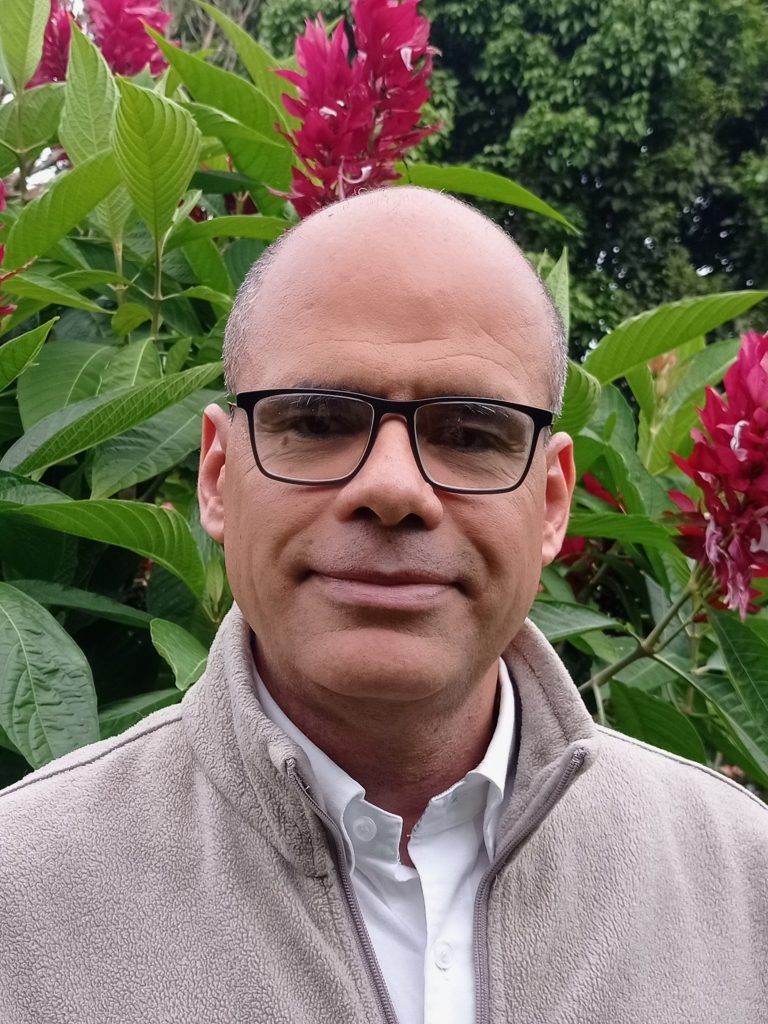
Instructor: José A. Alvarado Contreras, Ph.D. School of Mechanical Engineering, Universidad de Los Andes, Venezuela.
He graduated in Mechanical Engineering and had a master’s degree in Applied Mathematics in Engineering from Universidad de Los Andes in Venezuela. He obtained a Ph.D. degree in Civil Engineering from the University of Waterloo in Canada. He spent three years as a postdoctoral researcher at San Diego State University in the United States in mathematical modeling of sintering processes affected by gravity acceleration funded by the National Aeronautics and Space Administration (NASA). He is currently a Professor at the School of Mechanical Engineering of Universidad de Los Andes and Coordinator of the master’s program in Mechanical Engineering at the same institution. He is a visiting professor at Moscow Engineering and Physics University (Russia) and Universidad Politécnica Salesiana (Ecuador). He has taught undergraduate courses in Strength of Materials, Mechanics of Materials, Mechanical Design, and Materials Science. He has also taught graduate courses in Numerical Methods, Mechanics of Continuous Media, Solid Mechanics, and Finite Elements. He has dedicated his research work to modeling the mechanical behavior of materials, emphasizing multiscale modeling, continuum damage mechanics, and consolidation of porous materials.
WORKSHOP 4: Tips for writing and submitting scientific articles to internatinal journal in engineering
Content: First, the importance of publishing articles to strengthen the academic and business profile will be discussed, showing the benefits for an engineer to have publications in scientific journals. Subsequently, the basic sections of an article focused on the requirements of journals in the field of engineering (title, abstract, introduction, theoretical framework, methodology, results, discussion, conclusions, and references) will be addressed one by one, delving into the essential aspects in the writing of each of these sections and exposing the elements taken into account by international reviewers to accept or reject a publication. Subsequently, some elements of academic writing that should be considered when structuring a manuscript will be worked with exercises and examples. Additionally, it will be shown how to identify three key elements to make the article more striking: comparison with other studies, the added value of the research, and practical implications. Finally, the ten most common errors identified when submitting a scientific article to high-impact journals will be discussed. Required skills/abilities: Basic knowledge of the components of the scientific method. Tools: https://www.scimagojr.com/, https://journalfinder.elsevier.com/ Audience: The proposed workshop is aimed at teachers, undergraduate and graduate students in engineering who are interested in improving their skills in the structuring of scientific articles. Duration: 3 hours Date/Time: June 22th, 2022 (14:30-17:30 GMT-5). Modality: Hybrid. Venue: Auditorium.

Instructor: Alejandro Valencia Arias, Ph.D. Instituto Tecnológico Metropolitano, Colombia.
Ph.D. in Engineering – Industry, and Organizations from the National University of Colombia, Master in Systems Engineering from the National University of Colombia, and Engineering Administrator from the National University of Colombia. Editor in chief of CEA Journal (Colombia) indexed in Latindex, Redalyc, EBSCO, and DOAJ. He has been head of a research center. Visiting Professor at the University of Chiapas – Mexico. Associate Professor at the Faculty of Economics and Administrative Sciences in Instituto Tecnológico Metropolitano (ITM). Recognized as Senior Researcher by the Ministry of Science, Technology, and Innovation (Colombia). Categorized as a researcher in RENACYT (Peru) in the Carlos Monge Medrano category. Level: I. He has 75 articles published in Scopus journals and a HIndex of 30 in Google Scholar. Among his lines of research are: Agent-based Simulation, System Dynamics, Technology Adoption Models, Knowledge Management, Market Research, and Technological Entrepreneurship. He has participated as a speaker in academic events in Japan, Turkey, China, Morocco, United Arab Emirates, the United States, Spain, and Poland.
WORKSHOP 5: Simulation of internal combustion, electric and hybrid vehicle powertrain systems
Content: This workshop will show the different tools available in the SIMSCAPE platform to simulate electric traction systems. The use of these tools allows the analysis of various characteristics such as fuel consumption, power analysis, and efficiency present in the topologies of different types of vehicles. The first part of the session will provide a general powertrain analysis for each vehicle type (internal combustion, electric, and hybrid). The second part will analyze the different tools offered by the SIMULINK/SIMSCAPE platform, such as Sensors, sources, and configurations of each element, to generate models for the vehicle powertrain. Finally, different methodologies for developing simulations will be analyzed, using other tools to obtain results and energy consumption efficiency. Required skills/abilities: Knowledge in Matlab/Simulink (Available at: https://la.mathworks.com/products/matlab.html, versión R2022 is recommended). Tools: Software: MATLAB & Simulink, Audience: Undergraduate and graduate students. Duration: 3 hours Date/Time: June 22, 2022 (14:30-17:30 GMT-5). Modality: Hybrid. Ubicación: Computer Lab B1 (Third floor Building B).

Instructor: Prof. Juan Diego Valladolid, Universidad Politécnica Salesiana Sede Cuenca, Ecuador.
Juan D. Valladolid was born in Cuenca, Ecuador. He received his Electronic Engineering degree from the Universidad Politécnica Salesiana, Cuenca, Ecuador. He studied and received his Master’s Degree in Industrial Control and Automation from the Universidad Politécnica Salesiana. He is currently pursuing a Doctorate Program in Engineering at Pontificia Universidad Javeriana, Bogotá, Colombia. He is now a full-time professor at the Universidad Politécnica Salesiana and a Transportation Engineering Research Group (GIIT) member. He is the author of several papers. His current research interests include hybrid dynamic systems, power converters, system optimization, electric vehicles, and nonlinear control systems.
KEYNOTE SPEAKERS
“The convergence of smart people and cyborgs to make innovation for making resilient and smart cities”
This talk offers a panoramic view of how the convergence of smart people and the cyborg trend by human implant technologies could push and accelerate innovations for accelerating the conversion of our cities into resilient and smart cities. Managers of cities must be prepared for the next pandemic or an electric blackout that could make the Internet shut down, and the known implications for financial services, online education, e-government services and so on. Today people are not so affordable to collaborate making a reality for “smart people” or even there is huge opposition to adopting the enhancement of human capabilities through the human implant technologies for being “cyborgs” to accelerate innovation for having resilient cities. But do not forget that nowadays COVID, wars and the tremendous change in geopolitics teach us that “what yesterday seemed to be impossible today is reality and what today seems to be for granted it could change tomorrow.
Prof. José Ignacio Castillo Velázquez – ADVNETLAB Universidad Autónoma de la Ciudad de México (UACM)

Castillo has been working for 26 years in IT&C industries (Datacenter Dynamics, RedUno-TELMEX, IFE, DICINET), as well as in private and public universities as a professor (UACM, UDEFA, BUAP, UPAEP, UTM) participating in more than 100 national and international projects. He is a tenured Professor& Researcher at Electronics & Telecommunications Dep. with Universidad Autónoma de la Ciudad de México UACM where he coordinates the Advanced Networking Laboratory (ADVNETLAB) and the Diploma on Corporative Networks. Castillo is an IEEE Computer Society Distinguished Lecturer. As a professor, he has lectured more than 136 graduate and undergraduate courses, and written journal and conference papers, 3 books, 1 software development, and technical reports. He is also a referee for magazines and conferences and has organized national and international conferences and seminars. He had offered more than 136 keynotes, invited talks, and wrote more than 100 divulgation articles for magazines and newspapers. He received his B.Sc. degree in Electronic Sciences (95), completed with honours, and his M.Sc. degree in Semiconductor Devices (98) both from the Autonomous University of Puebla, Mexico.
“Fuzzy computing and decision-making in real-world applications”
The thought process involved in the act of decision making is a complex array of streaming possibilities in which a person selects or discards information made available from diverse sources. In doing so, one is led by a meaningful analysis of available information and optimal selection out of several apparently equi-efficient decisions. Since Zadeh (1965) published the fuzzy set theory as an extension of classic set theory, it has been widely used in many fields of application, such as pattern recognition, data analysis, system control, etc. In this speech, we develop and apply similarity measures between various higher-order fuzzy sets and their applications under a fuzzy environment.
Prof. Dr. Sunny Joseph Kalayathankal – Jyothi Engineering College, India

Prof. Dr Sunny Joseph Kalayathankal received the MSc. degree from Kerala University (Kerala, India) in 1986, BEd from Calicut University in 1987, MPhil from Kerala University in 1993 and PhD in Mathematics from Kerala University in 2010, MCA from Indira Gandhi National Open University in 2002, M.Tech IT from Karnataka State Open University in 2013 and PhD in Computer Science under Bharathiar University in 2018. He is currently working as a Principal (Professor & Dean of Research) at Jyothi Engineering College Affiliated with APJ Abdul Kalam Technological University, Thrissur, Kerala India and has almost 35 years of teaching and 16 years of research experience. He has published more than 91 papers in the areas of Fuzzy modelling and decision making, Graph theory and Applied Mathematics. He has served as Keynote and invited speaker at various National and International conferences. He is the reviewer of the Iranian Journal of Fuzzy System, International Journal of Fuzzy Systems and Journal of Mathematical Modeling and Computer Simulation.
“WAY2AGE: A Voice Assisstant to examine Cognitive impairment using Azure Cognitive Services”
Early diagnosis of cognitive impairment is crucial to slow the progression of the disease. In this way, healthcare workers rely on a careful medical history, physical examination, laboratory tests, among others. Given that language can be used as an early marker of cognitive decline, virtual assistants (VAs) are an innovative emerging tool. By providing the volume of data needed in health counselling, better treatment monitoring and cost optimisation are expected. Thus, the overall objective of WAY2AGE is to provide healthcare professionals with voice-based screening techniques for cognitive impairment in the elderly analysed by natural language processing. This work proposes a prototype called WAY2AGE, tested on a sample of 20 elderly people. The results, although preliminary, seem to show a relationship between speech length and scores on traditional screening tools.
Carmen Moret Tatay, Universidad Católica de Valencia San Vicente Mártir, Spain
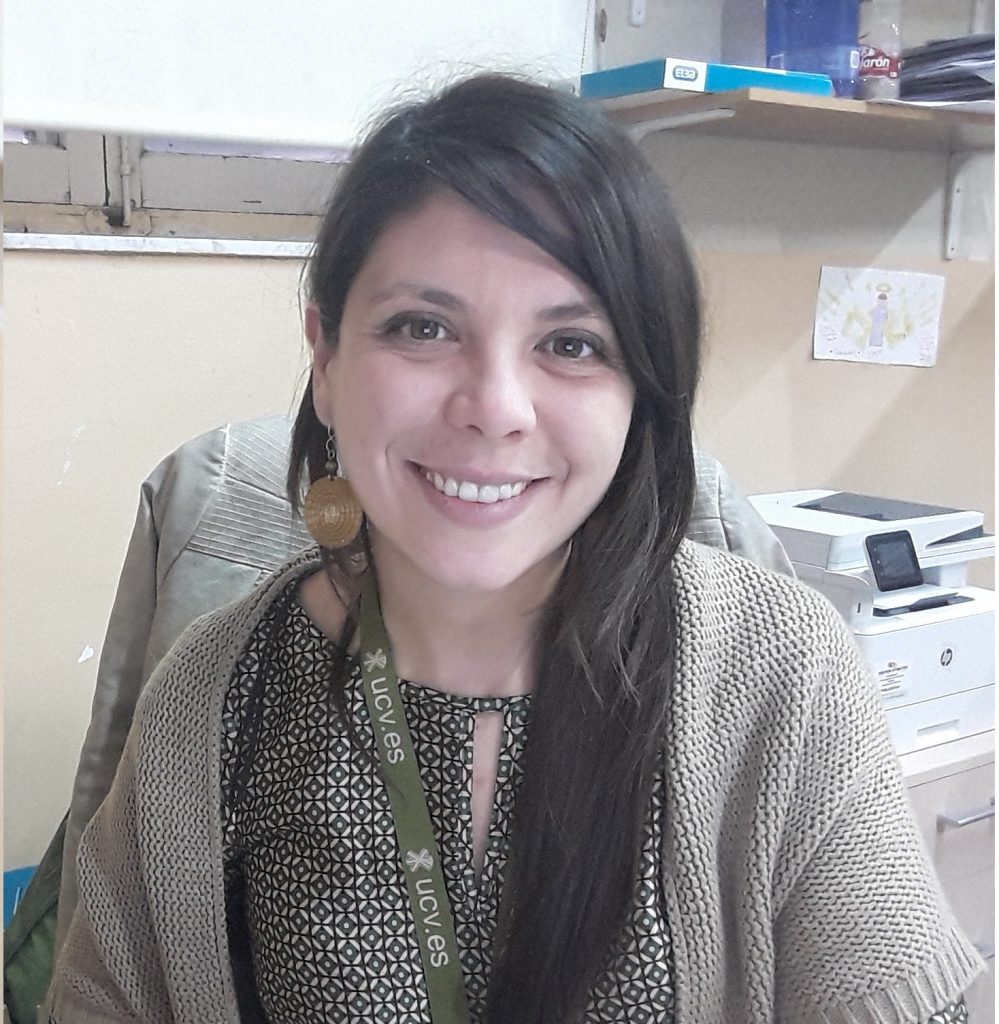
Degree in Psychology, PhD cum laude in Mathematics, and PhD cum laude in Health Science. She is a lecturer and researcher at the Catholic University of Valencia, San Vicente Mártir, performing at the same time coordination of international relations of the Faculty of Psychology and the research group MEB Lab (Mind, Emotion and Behavioral Research Laboratory) at the same University. In addition, she is member of the panel of evaluators and external experts of different national grants. Researcher with many research stays in the USA, Brazil, Italy, and France.
“High-impact scientific journal search for the publication of scientific articles in engineering”
Scientific research has become one of the pillars of development for emerging economies in the quest to generate more outstanding technological capabilities and innovation mechanisms. In engineering, there is a solid academic and social commitment to disseminate research findings in various alternatives that promote the appropriation of knowledge. Scientific journals have positioned themselves as one of the most accepted routes to spread contributions to knowledge. They have a high reach through the Internet and wide dissemination among the international academic community. However, to correctly choose the journal in which an article will be published, several elements that we will address in this talk must be taken into account. The three main components of the decision will be discussed: thematic affinity, journal indexing, and response time. The fundamental aspects of the main databases worldwide (WOS and Scopus) and the basic elements when submitting a scientific article to a journal of global impact will be socialized. Finally, the main aspects taken into account by international reviewers in the field of engineering will be outlined.
Alejandro Valencia Arias, Ph.D. Instituto tecnológico Metropolitano, Colombia

Ph.D. in Engineering – Industry, and Organizations from the National University of Colombia, Master in Systems Engineering from the National University of Colombia, and Engineering Administrator from the National University of Colombia. Editor in chief of CEA Journal (Colombia) indexed in Latindex, Redalyc, EBSCO, and DOAJ. He has been head of a research center. Visiting Professor at the University of Chiapas – Mexico. Associate Professor at the Faculty of Economics and Administrative Sciences in Instituto Tecnológico Metropolitano (ITM). Recognized as Senior Researcher by the Ministry of Science, Technology, and Innovation (Colombia). Categorized as a researcher in RENACYT (Peru) in the Carlos Monge Medrano category. Level: I. He has 75 articles published in Scopus journals and a HIndex of 30 in Google Scholar. Among his lines of research are: Agent-based Simulation, System Dynamics, Technology Adoption Models, Knowledge Management, Market Research, and Technological Entrepreneurship. He has participated as a speaker in academic events in Japan, Turkey, China, Morocco, United Arab Emirates, the United States, Spain, and Poland.
“IEEE Standards: COVID-era Learning Tecnologies Powering Innovation and Standards Education Programs”
During recent times, several changes have occurred in our workforce and educational programs due to the COVID pandemic, and the broad spectrum of social distancing measures all over the world. Such social distancing and travel restriction elements also created a huge challenge in education and career development in the workplace. The wide-reaching effects were felt in all levels of education, from child-care to grad-school programs and beyond. In our case, when dealing with publication of international standards, and more specifically, the development of educational programs, the challenge was real and impromptu; switching from face-to-face to remote learning was needed on the flip of a coin, and even though, there were eLearnings before the pandemic, those educational programs were meant to supplement other activities and face-to-face experiences. In this context, this talk provides some eLearning and mobile applications developed or improved during COVID pandemic times related to curriculum content programs based on IEEE Standards, and perhaps codes and standards from other organizations as well; and how this content adds value to undergraduate, graduate, and continuing educational programs. The conference will also highlight some of the lessons learned from the pandemic, what have we learned, unlearned and relearned. Other relevant content includes detailed information regarding the standards development processes, and how value-added content can boost the career development of those in many engineering and technical fields. The standards and the content in this speach could be useful to STEM and other innovation fields such as patents, intellectual property, legal, and more. Therefore, not only engineers, but other professionals could benefit from this proposal.
Ernesto Vega Jánica, IEEE Standards Association Senior Manager, opportunities Development Bussiness Development & Alliance Management, E.U.A.
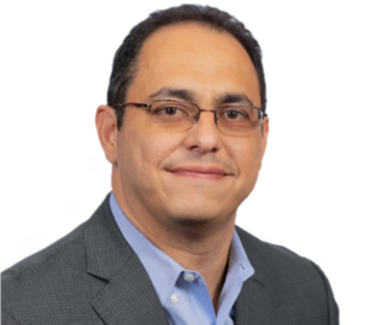
Ernesto works at IEEE Standards Association as their Senior Manager of Development Opportunities. He leads the development of products related to their standards, such as manuals, educational programs, mobile applications, and more. He is an electrical engineer and was recently recognized as the 2017 Fire Protection Engineer of the Year by the Society of Fire Protection Engineers (SFPE), New Jersey Chapter; and received the 2011 Tyco Patent Award as the author of a patent application on visual fire alarm notification devices. Mr. Vega Jánica has authored multiple technical papers and international presentations in the fields of engineering as well as optimization modeling applications. Vega Jánica, a graduate of the University of Maryland, is also a mathematics enthusiast. His research on multiple number systems has led him to humanitarian and STEM endeavours. Mr. Vega Jánica is also an international standards instructor and author of mathematics books for children using Latin American Indian tribal number systems.
“Robotic neuro-rehabilitation“
This speech addresses a neuro-robot system developed at the Universidade Federal do Espírito Santo (UFES)/Brazil, which is used for lower-limb rehabilitation of post-stroke patients. The system is composed of different technologies, such as transcranial Direct Current Stimulation (tDCS), which is a non-invasive, painless brain stimulation therapy that uses direct electrical currents to stimulate specific parts of the brain; Brain-Computer Interface (BCI based on Motor Imagery (MI), which is used to allow a direct communication pathway between the brain’s electrical activity and an external device (robot); a Virtual Reality Environment (VRE) to stimulate the motor rehabilitation through a virtual environment and an avatar riding a tricycle; and a Robotic Monocycle, which is used to execute real pedaling movements according to the MI produced by the patient. All this system was validated with post-stroke patients of a Rehabilitation Center in Brazil. Videos regarding tDCS application, training with the VRE and BCI as well as the automatic pedaling of the robotic monocycle through MI are shown. Also, results pre- and post-experiments are presented, in addition to the motor evaluation of patients (before and after the intervention) regarding the number of pedaling (rpm), and the 10-meter walk test (time and number of steps).
Teodiano Freire Bastos, Ph.D. Universidade Federal do Spírito Santo, Brazil
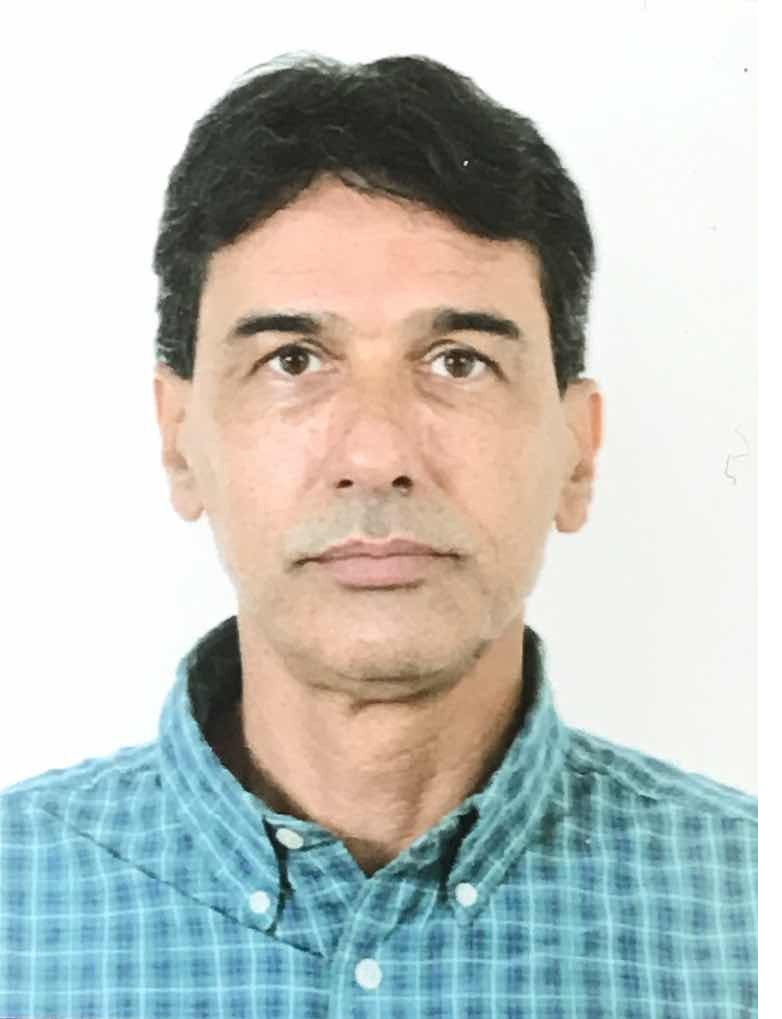
Dr. Teodiano Freire Bastos-Filho received his B.Sc. degree in Electrical Engineering from Universidade Federal do Espirito Santo (UFES, Brazil) in 1987, his Specialist degree in Automation from Instituto de Automática Industrial (Madrid, Spain) in 1989, and his Ph.D. degree in Physical Science (Electricity and Electronics) from Universidad Complutense de Madrid (Spain) in 1994. He was Postdoc Fellow at the University of Alcalá (Spain, 2005) and at RMIT University (Australia, 2012). He is currently a full professor at UFES, teaching and doing research at the Department of Electrical Engineering, Postgraduate Program in Electrical Engineering, Postgraduate Program in Biotechnology, and Doctorate Program of the Northeast Network of Biotechnology (RENORBIO). His current research interests are signal processing, rehabilitation robotics, assistive technology for people with disabilities, and bioinformatics. He has participated in 44 research projects (and he was the main coordinator of 34 out of them) and organized 12 international conferences (CBEB2020, IWAT2019, IWAT2015, ISSNIP/BRC2014, 2013, 2012, 2011, and 2010, IWSSIP2010, BIODEVICES 2010, 2009 and 2008, IBERDISCAP2006 and 2003) and 3 national conferences (CBEB2020, SBAI1997, CBA2016), and he is member of four editorial boards (Scientific Reports – Nature, Polytechnica, Advances in Data Science and Adaptive Analysis – ADSAA, Journal of Medical Engineering, and Ingenious), and reviewer of several Journals (JMBE, JNER, Robotica, RAS, Sensors, Muscle & Nerve, etc), and Conferences (IEEE, ISSNIP/BRC, ICRA, Biodevices, etc). He has published more than 800 works: 138 in Journals (IEEE, Sensors and Actuators, Sensor Review, etc.), 603 in Conferences (IEEE, IFAC, etc.), 4 scientific books, 9 books of conference,s and 53 chapters of books. His h-index is 29 in Google Scholar, 23 in Scopus, and 17 in Web of Science. He holds nine invention patents: one international invention patent and eight national invention patents, and has developed 18 products/processes without patent registration, and he was awarded 24 national and international prizes. He has supervised 7 Post-Doc Fellows, 36 Ph.D. Thesis, 56 MSc Thesis, 49 Undergraduate and 50 scientific initiation student works. Currently, he is supervising 9 Ph.D., 6 MSc, 2 undergraduate, and 1 scientific initiation student. His full Curriculum Vitae is available at: http://lattes.cnpq.br/3761585497791105
“3D Multimodality medical imaging”
This talk presents an overview of several imaging modalities that can be used, either combined or in separated, for strengthening diagnosis and monitoring health issues. To illustrate, we start with a common application which integrates 3D computer tomography (CT) or magnetic resonance images (MRI) images, leading to 3D reconstruction for manufacturing orthoses and prosthesis by 3D printing. The next frontier leads us to 3D bioprinting materials for health purposes. For example, the generation of 3D models of circulatory systems for helping the inspection of intracranial aneurisms (IA) and the respective surgeons training, based on the maneuvering of specific tools (such as clips and coils) in a more realistic way. Additionally, the use of 3D scanning systems for generating 3D body geometries, which can be combined with inner images of the body (CT, MRI, among other anatomical images). Also, the generation of 3D facial models for assisting inspection of facial phenotypes of rare genetic syndromes. Expanding this approach with other imaging modalities, the functional images can be included, such as infrared thermography and scintigraphy. In this way it is possible to go at the next level, which is the combination of different imaging modalities, leading us to our proposed method, called 3D THERMO-SCAN. The future of this research intends to use additional methods for helping further imaging segmentation, decisions making and differentiation between normal vs pathological images, by using other computational tools, such as artificial intelligence (AI) and neural networks.
Mauren Abreu de Souza, PONTIFÍCIA UNIVERSIDADE CATÓLICA DO PARANÁ (PUCPR), Brazil
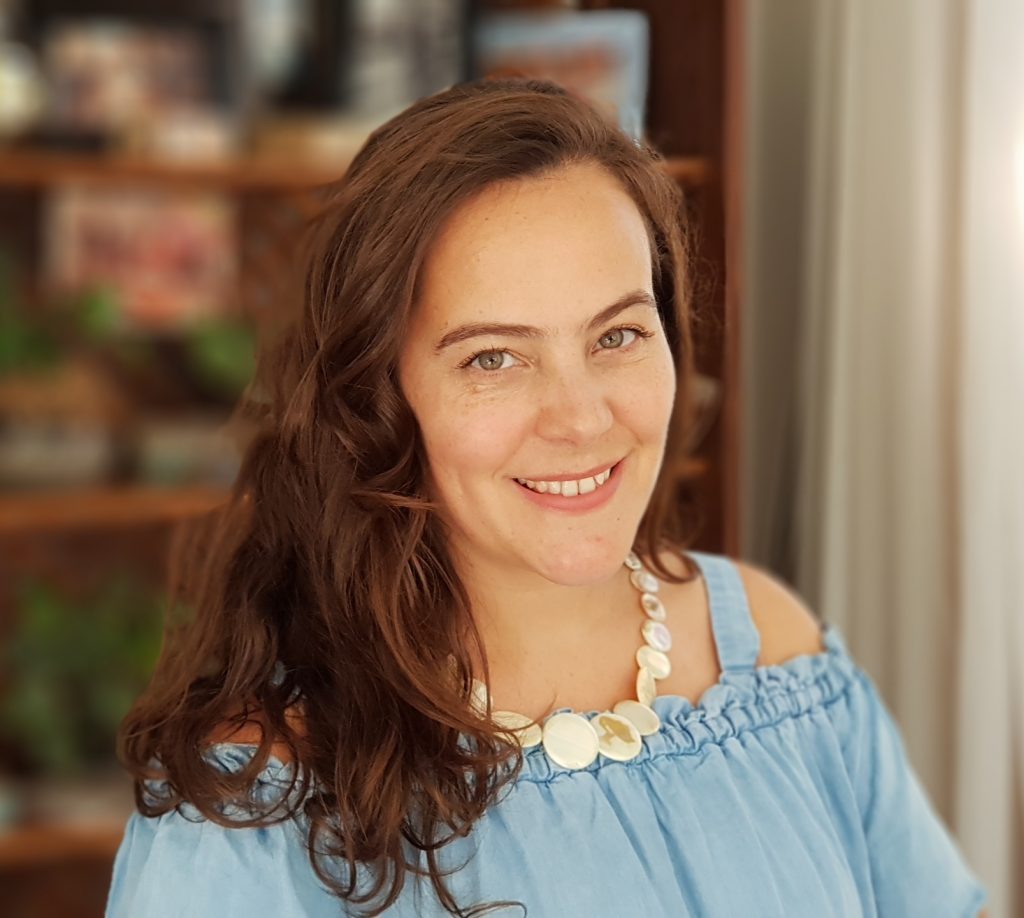
Mauren has a PhD in Medical Physics and Bioengineering from the University College London (UCL) – United Kingdom; also, a master’s degree (M.Sc.) in Electrical Engineering and Informatics (with focus in Biomedical Engineering) from “Universidade Tecnológica Federal do Paraná (UTFPR)” – Brazil; and she has an undergraduate degree (Bachelor and Teaching level) in Physics from the “Universidade Federal do Paraná (UFPR)” – Brazil. Currently she is with the Graduate Program in Health Technology (PPGTS) of the “Pontifícia Universidade Católica do Paraná (PUCPR)” – Brazil, as an Associate Professor. Her main research interests are 3D multimodality imaging modelling, 3D images reconstruction/fusion (from CT and MRI medical images), Infrared thermography images, Optical tomography (OT), Metrology and 3D modelling (from camera-based systems, 3D scanners and photogrammetry approaches). She has experience working with different background research groups (including both technical, engineering and medical teams), providing versatile researches, which enable performing transfer knowledge and achieving skills in different environments/scenarios
“Terahertz time-domain spectroscopy for characterizing materials in agribusiness”
This talk will address the use of Terahertz band radiation, a relatively new technology that is at most 30 years in development. It was born in the late 80’s and is still in its early stages of research at both fundamental and applied levels. For example, a simple search in SCOPUS with the word “Teraherz” yields only 139 scientific papers in the last 3 decades, indicating that there is still much to be studied. This technology has shown to have interesting applications for the non-destructive analysis of various materials, although there is still a need to study its use in other areas, such as food (Cruz, 2020). THz spectroscopy is emerging as a suitable methodology to investigate the dynamic properties of organic molecules relevant to life sciences this because it can detect the collective low frequency vibrational modes of biomolecules (Charkhesht et al., 2018), it has been widely used to study the spectroscopic characteristics of a variety of materials, such as semiconductors, biomolecules, liquids and pharmaceuticals in the spectral region ranging from 0.1 to 10 THz. THz spectra combined with multivariate classification is the strategy used to estimate materials linked to samples from the agro-industrial sector.
Jimy Oblitas Cruz, National University of Cajamarca, Peru
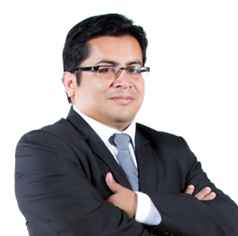
Jimmy Oblitas works in the area of university education, research and technology transfer, leading efforts in R+D+i. Agroindustrial Engineer, with Master studies in Microbiology and Food Technology, PhD candidate in Agricultural and Food Science and Technology at the University of Lleida in Spain; with 45 published scientific articles (SCOPUS and WOS), 2 book chapters and 4 granted patents; in topics related to spectroscopy, image processing in agribusiness and data processing using Machine learning and Deep learning with more than 20 years of academic life, currently dedicated to research linked to the Center for Advanced Research in Agroengineering of the Universidad Privada del Norte in Peru and teaching at undergraduate and postgraduate level, has been Keynote and invited speaker at several national and international conferences and reviewer for several international journals.
General Chairs:
PhD. Juan Pablo Salgado, Universidad Politécnica Salesiana, Ecuador
MSc. Pablo Pérez Gosende, Universidad Politécnica Salesiana, Ecuador.
PhD. Luis Álvarez Rodas, Universidad Politécnica Salesiana, Ecuador.
PhD. Pablo Parra Rosero, Universidad Politécnica Salesiana, Ecuador.
PhD. Christopher Reyes López, Universidad Politécnica Salesiana, Ecuador.
PhD. Juan Carlos Lata García, Universidad Politécnica Salesiana, Ecuador.
PhD. Mary Vergara, Universidad Politécnica Salesiana, Ecuador.
Comité Consultivo:
PhD. Riccardo Cristoforo Barberi, Università della Calabria, Italy
PhD. Carlos Lozano Garzón, Director IEEE ComSoc, Latin American Region, Colombia
PhD. Roger Clotet Martínez, Universidad Internacional de Valencia, Spain
PhD. José Ignacio Huerta Cardoso, Tecnológico de Monterrey, Mexico
PhD. Manuel Díaz-Madroñero, Universitat Politècnica de València, Spain
PhD. Mariela Cerrada Lozada, Universidad Politécnica Salesiana, Ecuador
PhD. Mónica Karel Huerta, Universidad Politécnica Salesiana, Ecuador
PhD. José Manuel Aller Castro, Universidad Politécnica Salesiana, Ecuador
PhD. Esteban Inga Ortega, Universidad Politécnica Salesiana, Ecuador
PhD. Vladimir Robles Bykbaev, Universidad Politécnica Salesiana, Ecuador
Reviewers
- Humberto Michinel, Ph.D. General Secretary of the International Comission for Optics, Universidad de Vigo, España
- Vicente Parra-Vega, Ph.D. Centro de Investigación y de Estudios Avanzados (Cinvestav), México
- Carlos Lozano-Garzón, Ph.D. Director IEEE ComSoc, Latin American Region, Colombia
- Hugo G. Espinosa, Ph.D. Griffith University, Australia
- Sandro Cesar Silveira-Jucá, Ph.D. Instituto Federal de Educação, Ciência e Tecnologia do Ceará, Brasil
- José Luis Verdegay, Ph.D. Universidad de Granada, España
- Wilson Castro-Silupu, Ph.D. Universidad Nacional de Frontera, Perú
- Prof. Dr. Sunny Joseph Kalayathankal, Jyothi Engineering College, India
- Luis Fernández-Ramírez, Ph.D. Universidad de Cádiz, España
- Josefa Mula, Ph.D. Production Management and Engineering Research Centre (CIGIP), Universidad Politécnica de Valencia, España
- José A. Alvarado-Contreras, Ph.D. Universidad de Los Andes, Venezuela
- Pedro Fernández de Córdoba, Ph.D. Universidad Politécnica de Valencia, España
- Luis Fernando Mulcue-Nieto, Ph.D. Universidad Autónoma de Manizales, Colombia
- Víctor Ancajima-Miñán, Ph.D. Universidad Nacional de Piura, Perú
- Luís Guimarães, Ph.D. Universidade do Porto, Portugal
- Nervo Xavier Verdezoto, Ph.D. Cardiff University, Reino Unido
- Daniel Gamermann, Ph.D. Universidade Federal do Rio Grande do Sul, Brasil
- Gilberto Reynoso-Meza, Ph.D. Pontificia Universidade Católica do Paraná, Brasil
- José Ignacio Huerta-Cardoso, Ph.D. Tecnológico de Monterrey, México
- Higinio Sánchez, Ph.D. Universidad de Cádiz, España
- Francisco Jurado, Ph.D. Universidad de Jaén, España
- Salvatore Patera, Ph.D. Universidad de Salento, Italia
- Ricardo Silva, Ph.D. Foundation for Living, Wellness and Health, E.U.A.
- Julian Triana-Dopico, Ph.D. Post-doc. position in Arizona State University, E.U.A.
- Miguel Angel Díaz-Rodríguez, Ph.D. Universidad de los Andes, Venezuela
- Ignacio Castillo-Velázquez, Ph.D. Universidad Autónoma de Ciudad de México
- MSc. R.S. Ajin, Idukki District Disaster Management Authority, India
- Joan Vázquez-Molina, Ph.D. Research Engineer, Tenneco, Bélgica
- Simón Jesús Fygueroa-Salgado, Ph.D. Universidad de Pamplona, Colombia
- Raúl La Madrid Olivares, Ph.D. Universidad de Piura, Perú
- César de Praga-Moraga, Ph.D. Universidad de Valladolid, España
- PhD. Marta Fernández, Universidad del País Vasco, España
- Sebastian Provenzano, Ph.D. Universidad de los Andes, Venezuela
- Francklin Rivas-Echeverría, Ph.D. Universidad Técnica Federico Santa María, Chile
- Manuel Díaz-Madroñero, Ph.D. Universitat Politècnica de València, España
- Carlos Bloem, Ph.D. Universitat Politècnica de València, España
- Eduardo Almentero, Ph.D. Universidade Federal Rural do Rio de Janeiro, Brazil
- Jhon W. Castro, Ph.D. Universidad de Atacama, Chile
- Vera Ferreira, Ph.D. Universidad Federal do Pampa, Brazil
- Patricio Galdames, Ph.D. Universidad del Bio Bio, Chile
- Roberto Murphy, Ph.D. Instituto Nacional de Astrofísica, Óptica y Electrónica (INAOE), México
- José María López, Ph.D. Universidad Politécnica de Madrid, Spain
- Gabriela Pérez, Ph.D. Universidad Adolfo Ibañez, Chile
- Enrique Alcalá-Fazio, PhD. Unidad de Seguridad en el Transporte Colectivo del INSIA – Universidad Politécnica de Madrid, España
- Leonardo Pachano, Ph.D. Universitat Politècnica de València, España
- Jhon Lizarazo, Ph.D. Tecnoparque Norte de Santander, Servicio Nacional de Aprendizaje SENA, Colombia
- Laís de Oliveira Assis, Ph.D. Universidad de Cádiz, España
- Marcello Anderson Ferreira-Lima, Ph.D. Instituto Federal de Educação, Ciência e Tecnologia do Ceará, Brasil
- Emanuel Philipe Pereira Soares Ramos, Ph.D. Centro Federal de Educação Tecnológica de Minas Gerais, Brasil
- Juan Manuel Chávez-Mendoza, Ph.D. Universidad Tecnológica Fidel Velázquez, México
- José Oramas M. Ph.D. University of Antwerp, Belgium
- María Elena Villapol, Ph.D. Western Institute of Technology at Taranaki, New Zealand
- Julita Inca, Ph.D. Pontificia Universidad Católica del Perú, Perú
- Jesús López-Villada, Ph.D. Escuela Politécnica Nacional, Ecuador
- Efrén Esteban Fernández-Palomeque, Ph.D. Universidad del Azuay, Ecuador
- Zulay Niño-Ruiz, Ph.D. Universidad Regional Amazónica “IKIAM”, Ecuador
- Rodolfo Gordillo-Orquera, Ph.D. Universidad de las Fuerzas Armadas (ESPE), Ecuador
- Carlos Monsalve-Artega, Ph.D. Escuela Superior Politécnica del Litoral, Ecuador
- Federico Domínguez-Bonini, Ph.D. Escuela Superior Politécnica del Litoral, Ecuador
- Mariela Cerrada-Lozada, Ph.D. Universidad Politécnica Salesiana, Ecuador
- Mónica Karel Huerta, Ph.D. Universidad Politécnica Salesiana, Ecuador
- José Manuel Aller-Castro, Ph.D. Universidad Politécnica Salesiana, Ecuador
- Esteban Inga-Ortega, Ph.D. Universidad Politécnica Salesiana, Ecuador
- Vladimir Robles-Bykbaev, Ph.D. Universidad Politécnica Salesiana, Ecuador
